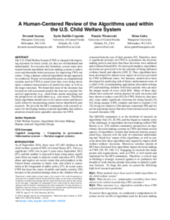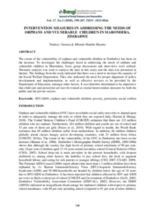Displaying 241 - 250 of 1787
This guidance provides local authorities and health boards, working in partnership with other public bodies and organisations, with information and advice about how they should exercise the functions conferred by Part 3 (Children’s Services Planning) of the Act.
This guide aims to build Save the Children staff capacity through the provision of mentoring to Save the Children staff, funded partner organisations, staff and volunteers, including field coordinators, child and youth group leaders, community mentors and facilitators.
This book prepares future child welfare professionals to tackle the complex and challenging work associated with responding to child maltreatment.
Este artículo explora las prácticas institucionales que facilitan u obstaculizan la protección de derechos de niños, niñas y adolescentes en el sistema de protección de la niñez en Honduras a través de sus diferentes etapas.
Considering the challenges modern migration crisis has posed on both a practical and theoretical basis, this article takes a thorough look at the protection of unaccompanied minors under international human rights law with the aim to present the main issues that need to be revisited and the areas that require further development.
This article from the Canadian Journal of Family Law finds that an Australian version of the Indian Child Welfare Act (ICWA) of the United States is feasible and could significantly reduce Indigenous child removals and the break up of Indigenous families and communities in Australia.
This article explores changes in policy and practice in children’s services in the UK over the past 40 years and discusses the thinking that has underpinned them.
Using a human-centered algorithmic design approach, the authors of this study synthesize 50 peer-reviewed publications on computational systems used in the U.S. Child Welfare System (CWS) to assess how they were being developed, common characteristics of predictors used, as well as the target outcomes.
To investigate the challenges faced in addressing the needs of orphans and vulnerable children in Marondera, focus group discussions and interviews were utilised. Thematic analysis was used to analyse the data in this study and the data was presented in themes.
This book brings together knowledge of how modern countries in Europe and the United States deal with the issue of errors and mistakes in child protection in a cross-national perspective.







